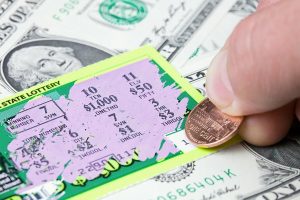
For many, the first step to buying a home is saving up for the down payment. It can feel like a difficult goal when you first start, even if you don’t plan to buy for years. Here are some tips to help you start saving and speed up the process:
Determine your budget
Knowing how much you need to save will help you create a focused plan for reaching your goal. Keep in mind that most people can qualify for a bigger mortgage than they can comfortably afford. Use a mortgage affordability calculator to help you determine what you could borrow, then speak with a home lending advisor to better understand what fits your budget.
A common down payment amount is 20%, but there are lower options available. However, a higher down payment can mean lower monthly payments, and paying less interest over the life of the loan. It can also help you avoid the extra expense of private mortgage insurance (PMI).
Be sure to calculate other costs of home buying, like:
Chase is now offering a $5,000 homebuyer grant to help more customers cover closing costs and down payment when buying a home in 6,700 minority neighborhoods nationwide. For more info and to see if you qualify, or to find a Chase Home Lending Advisor in the Twin Cities, visit www.chase.com/communitylending, or reach out to Chase Community Home Lending expert Felton Ellington at felton.ellington@chase.com.
Think about your timeline
Consider breaking your savings amount into monthly amounts. For example, say you want to buy a home in five years and you need to save $60,000 for the down payment and other costs:
- You’d need to save $1,000 a month for five years ($60,000/60 months = $1,000 per month).
A monthly savings plan can provide focus and make the down payment goal more achievable. It can also help you make better decisions about what you can afford and a reasonable timeline for doing so.
Pay down your debt
When trying to save for a home, it can feel counterintuitive to spend money paying down debt. After all, shouldn’t every extra penny go toward savings? Not necessarily. Paying down debt can help with your home purchase in two big ways:
It’s good for your credit score. Credit scores have a significant impact when qualifying for a mortgage. The better your credit score, the lower your mortgage interest rate is likely to be. Paying down debt shows lenders you’re able to cover your expenses.
It can free up savings in the future. The money you used to pay bills can now go directly into your savings account rather than paying interest on other debts like credit cards. The bonus is you won’t notice the difference in your budget because the money was going out anyway.
Paying down your debt can help when you buy your home, too. The money you were spending can now go toward updating and decorating.
Reduce your expenses
Review your expenses and decide what you can temporarily do without. Saving doesn’t have to mean eliminating all discretionary spending, but the more you cut back, the faster you’ll reach your financial goal. Steps to reduce your expenses include:
- List all of your expenses, to see where you could cut back. Consider everything, even an expense like rent. Could you move into a less expensive property or split bills with a roommate?
- Examine your monthly membership expenses. Do you need cable when you use mostly use streaming services? Could you ditch the gym membership in favor of running local trails?
Only you can decide what you’re willing to live without while saving for a down payment. But remember, you won’t be saving for a down payment forever. A few years without that subscription will feel worth it when you’re sitting in your new home.
Automate your savings
The more you can automate saving, the easier it can be to stick to the plan. Create a monthly automatic withdrawal on payday to send money directly to your savings account. Keep your savings separate, too, either by opening a new account with your current bank or even opening a new account with another bank.
This automated savings plan is known as “paying yourself first.” You pay your savings account first, then see what’s left to spend for the rest of the month, removing the temptation of waiting to see what’s left to save at the end of the month.
Unsure how to set up an automatic transfer to your savings account? Talk to your bank. Savings apps can also help you automate the process. Just be sure you read the fine print to make sure the money will be available for withdrawal when you need it.
Put “found” money to work
Found money is the money you earn that doesn’t come from your monthly income – unexpected windfalls not factored into your budget. Tax refunds, cash gifts for birthdays or holidays, a bonus at work, and rebate offers are all “found” money.
Instead of pocketing the money, put it toward paying down your debt or building your savings. Even small amounts can add up quickly over the years you’re saving for your home.
Cover yourself with an emergency fund
Plans are great, but life happens. Protect yourself and your savings by creating an emergency fund. Set aside some cash you can dip into for unexpected expenses like car repairs or a medical emergency.
You can use this money instead of paying with a high-interest credit card or withdrawing from down payment funds. When the emergency is over, pay back your emergency fund first, then resume your savings plan.
When you start saving, it can feel like reaching your goal is a long way off. But as months go by, your enthusiasm will build as will your savings. While you’re saving, make sure you know all of your mortgage options and keep an eye on interest rates.




